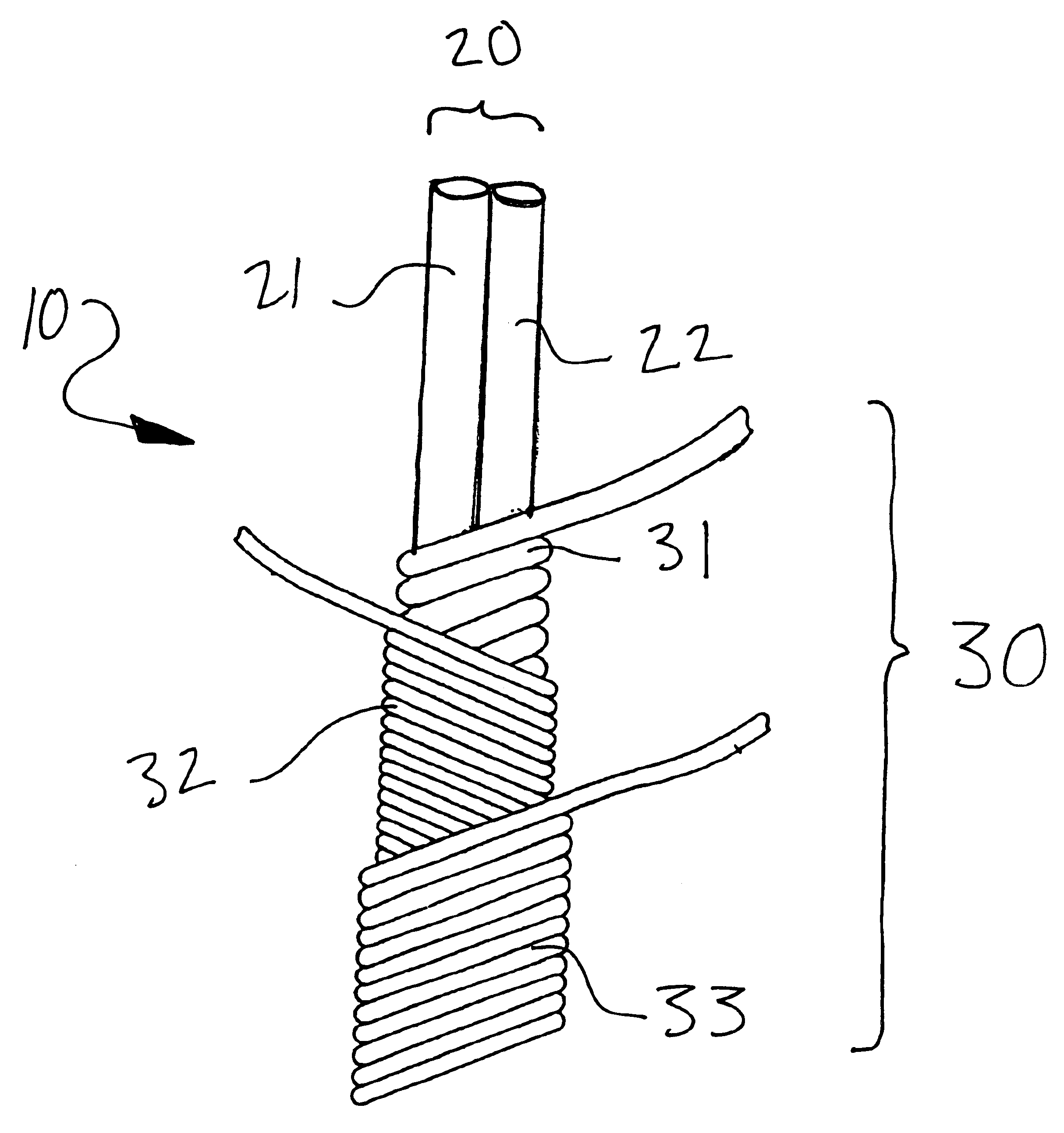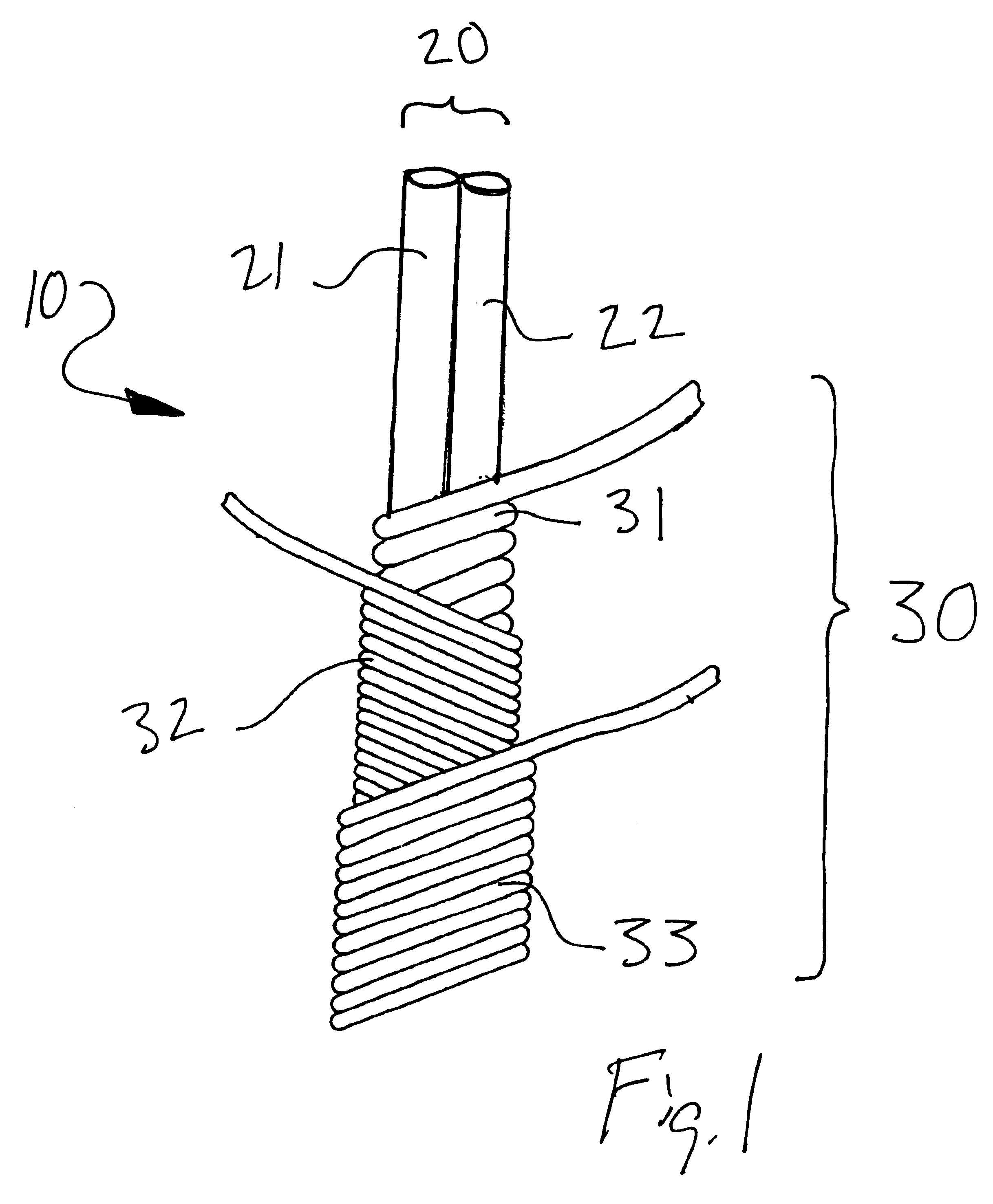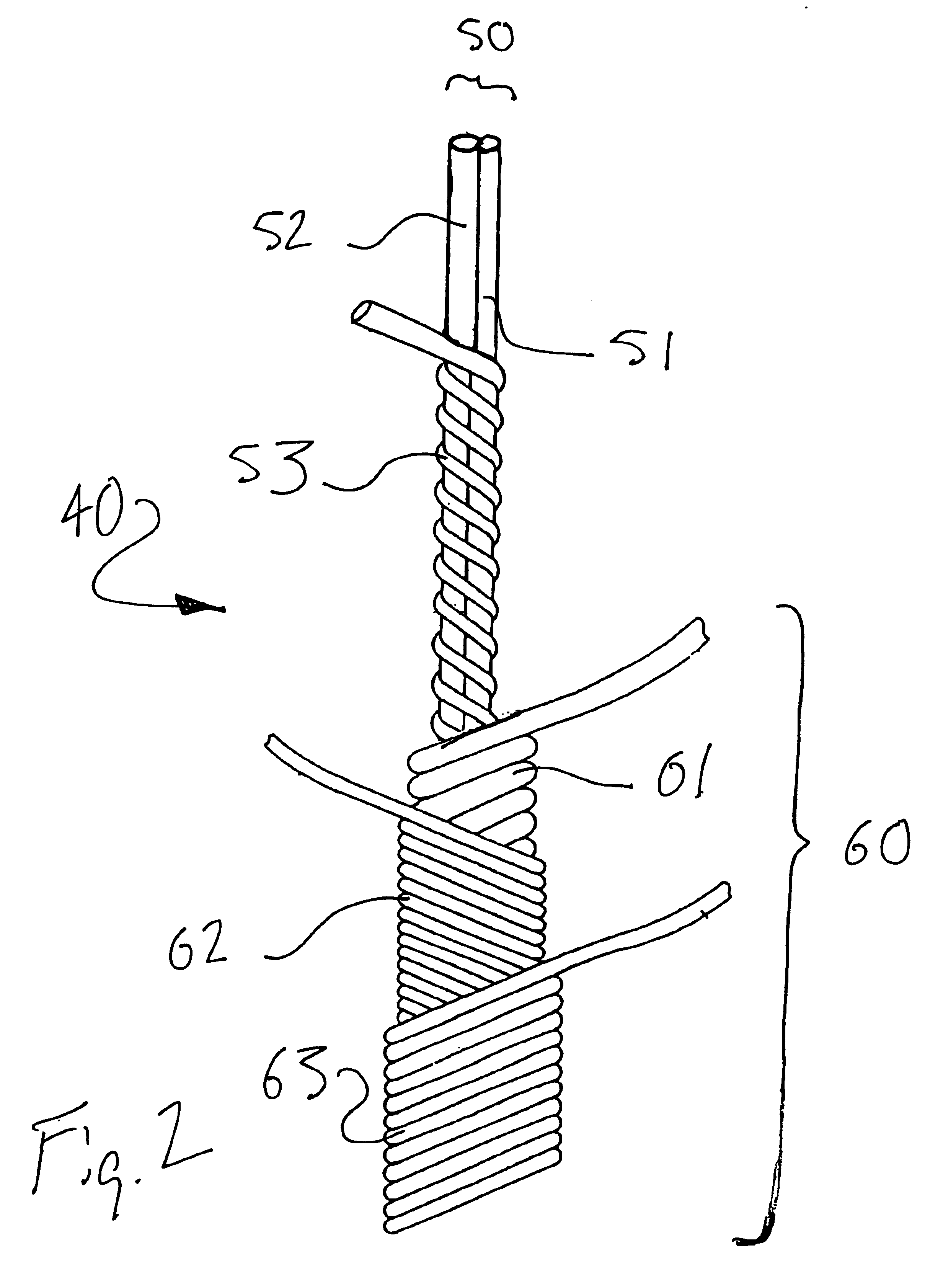Antimicrobial cut-resistant composite yarn and garments knitted or woven therefrom
a composite yarn and anti-microbe technology, applied in knitting, eye treatment, natural mineral layered products, etc., can solve the problems of protection but high cost, application of cut-resistant composite yarns are not aware, etc., to achieve high cut resistance, reduce the mount of fiberglass fragments, and be flexible and resilien
- Summary
- Abstract
- Description
- Claims
- Application Information
AI Technical Summary
Benefits of technology
Problems solved by technology
Method used
Image
Examples
second embodiment
the present invention is shown in FIG. 2. A protective yarn, generally referred to at reference numeral 40, includes a core member 50 and a cover member 60. The core member 50 includes a strand of stainless steel wire 51, a strand of polyester 52, and a core wrap 53. As shown in FIG. 2, the cover member 60 is preferably comprised: of three helically-wrapped cover yarns--an inner cover yarn 61, wrapped, wound or twisted on the core member 50, a middle cover yarn 62 wrapped, wound or twisted on the inner cover yarn 61 such that the orientation of the middle cover helix is opposite that of the inner cover yarn 61, and an outer cover yarn 63 wrapped, wound or twisted on the middle cover 62 such that the orientation of the outer cover helix is opposite that of the middle cover yarn 62.
The wire strand 51 is preferably a single longitudinal strand of stainless steel with a diameter of 0.003 in. The polyester strand 52 is preferably a single parallel strand of 500 denier flat polyester yarn...
PUM
| Property | Measurement | Unit |
|---|---|---|
| diameter | aaaaa | aaaaa |
| tensile strength | aaaaa | aaaaa |
| molecular weight | aaaaa | aaaaa |
Abstract
Description
Claims
Application Information
 Login to View More
Login to View More - R&D
- Intellectual Property
- Life Sciences
- Materials
- Tech Scout
- Unparalleled Data Quality
- Higher Quality Content
- 60% Fewer Hallucinations
Browse by: Latest US Patents, China's latest patents, Technical Efficacy Thesaurus, Application Domain, Technology Topic, Popular Technical Reports.
© 2025 PatSnap. All rights reserved.Legal|Privacy policy|Modern Slavery Act Transparency Statement|Sitemap|About US| Contact US: help@patsnap.com



